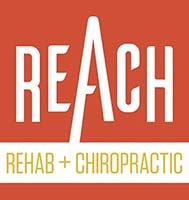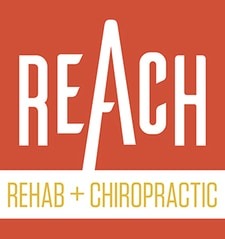What is Sciatica?
Sciatica is one of the most common causes of buttock and leg pain.
Sciatica is felt when there is irritation or inflammation of the sciatic nerve. It can cause pain and numbness/tingling anywhere along the nerve path.
The sciatic nerve is the largest and longest nerve in the human body, so symptoms can be felt from the hip and glutes, down to the bottom of the foot, or anywhere between.
Experiencing sciatica or pain down your leg? Schedule an appointment with your Plymouth Sciatica Pain Experts today!

What causes Sciatica pain?
Sciatica can be associated with low back pain, arthritis, and chronic muscle tightness. Here are the two main sources of sciatica:
- Lumbar Spine — Referred pain from the low back.
- Poor joint articulation
- Muscle Tension (Erector Spinae and Multifidi)
- Nerve Compression in the low back (pinching nerve)
- Sciatic Nerve — Injury and inflammation to the nerve.
- Tight nerve
- Muscle tension (Glutes and Piriformis)
- Nerve compression in the leg (pinching nerve)
Most cases of sciatica that seem to come out of nowhere are typically caused by low back irritation that can be corrected with an exercise strategy.
Searching for “sciatica treatment near me?” Schedule an appointment with one of our Sciatica Experts today!
How do I know if I have Sciatica?
There are many causes of leg pain. So, how do you determine what Sciatica pain feels like?
Common physical symptoms of Sciatica:
- Radiating pain down the leg (back of the leg is most common)
- Radiating numbness/tingling down the leg
- Low back pain and stiffness
- Tenderness around the low back and in the glutes/piriformis.
- Pain and/or tightness in the glutes and hamstrings.
- Leg pain when sitting (15+ minutes)
- Leg pain while exercising. (deadlifts and squats)
- A noticeable difference in the leg range of motion compared to the unaffected side.
Sciatica Anatomy
Can Sciatica cause other issues?
If you have sciatica, you likely are experiencing one or more of the common physical symptoms above.
Because of the anatomy of the spine and the high prevalence of low back pain, we often find the source of Sciatica is the lumbar spine (low back), even in the absence of low back pain.
Think of the low back generating Sciatica as a “kink in the garden hose” — the nerves are the hose, and the water is the flow of information from the brain to our leg muscles. When the hose is kinked, less water flows through it. The brain alerts the body with a sciatica pain alarm. Typically, this “kink” is at the lumbar spine!
 What’s causing the “kink”? Typically, a disc injury, e.g., disc bulge or disc herniation. However, Sciatica symptoms can occur when there is no obvious disc injury (per MRI). On the contrary, MRI can find a disc bulge or a bone spur, but it doesn’t necessarily mean it’s associated with your sciatica (incidental finding).
What’s causing the “kink”? Typically, a disc injury, e.g., disc bulge or disc herniation. However, Sciatica symptoms can occur when there is no obvious disc injury (per MRI). On the contrary, MRI can find a disc bulge or a bone spur, but it doesn’t necessarily mean it’s associated with your sciatica (incidental finding).
In rare cases, sciatica can indicate a serious medical problem requiring immediate attention.
Because a “kinked” nerve can affect multiple structures downstream through the leg, your Sciatica may cause symptoms often associated with other medical diagnoses.
Diagnoses Sciatica pain can mimic:
- Piriformis Syndrome
- Hip pain
- Hamstrings strain
- Calf strain
- IT Band Syndrome
- Knee pain
- Plantar Fasciitis
Due to the variability and imposter-like nature of Sciatica, it’s important to differentiate what problem(s) your Sciatica is causing. If you have back, hip, and leg pain, is it all caused by the source of Sciatica? Or is Sciatica causing back and leg pain, but there’s a secondary hip issue? It’s possible to have multiple layers (sources) of your pain and symptoms!
What can I do about Sciatica?
Many conservative treatments can be used for Sciatica to avoid surgery. With all mechanical (movement) pain, there’s a ‘what’ and a ‘why’ — what the problem is and why it’s occurring in the first place. To achieve resolution, it’s crucial to not only identify and correct the problem but address the behaviors which lead to its cause in the first place.
Here are some Sciatica self-help tips:
- Identify what activities affect your symptoms.
- Take mental notes of your actions when your pain feels better or worse to identify any behavioral patterns.
- Scale back your activities (only for a few weeks).
- Modify any activities that cause your symptoms. For instance, if your pain starts after deadlifting for ten reps, only perform 4-6 reps. Scale this activity back for a week, then see if you’re ready to go back up, i.e., ten reps the following week.
- Loosen tight tissues
- Overuse of the back-of-the-hip muscles (Glutes and Piriformis) commonly causes tightness in the back of the hip and leg. Loosen up these muscles before activities that typically cause pain.
- Below is a video on how to properly stretch your piriformis muscle.
- Start a stretch routine
- If you’re experiencing pain daily, then use that pain as motivation to start a daily stretching routine!
- Here is an easy beginner stretch routine.
- Here is a thorough (advanced) daily mobility routine
Find Sciatica Pain Relief At REACH Rehab + Chiropractic
It is important to be properly educated on positions to avoid that may increase pain while performing stretches and strengthening exercises for sciatica. If completing these techniques (above) does not improve your pain, you may need to be assessed by a Southeast Michigan Chiropractor to find the core problem to personalize your treatment plan.
Are you searching for a qualified sports chiropractor in Plymouth, MI, for your sciatica pain? REACH Rehab + Chiropractic is one of the leading names for sciaitca treatment in the area. We provide personalized assessments and treatment to help you regain your full range of motion quickly.
Next time you are searching for “sciatica treatment near me” in Canton, Ann Arbor, or another local community, think of REACH Rehab + Chiropractic. We treat acute and chronic sciatica pain. Book an appointment or contact us today at (734) 530-9134 for effective sciatica pain relief.


